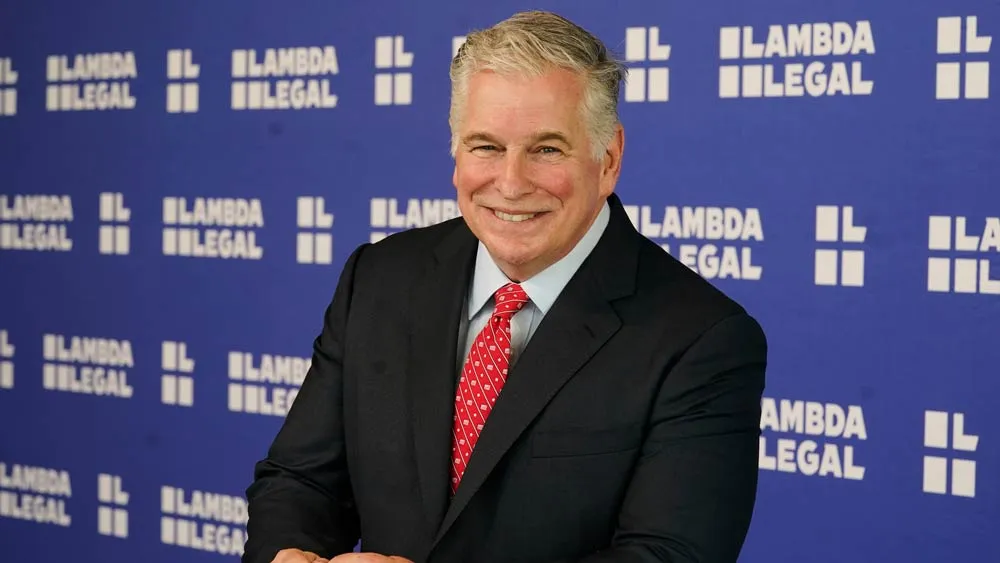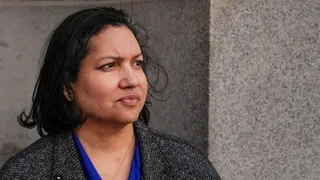August 26, 2011
California Researchers Study HIV Trends in Young Black Gay Men
Eric Miller READ TIME: 4 MIN.
Understanding social norms and cultural issues is essential to curbing HIV infection rates among black men aged 13 to 29, according to researchers from the University of California-San Francisco who undertook a two-year study of young black gay men in both Houston and Dallas.
Centers for Disease Control data from 2006 to 2009 show an alarming 48 percent increase in HIV infection rates among young black men.
An intervention program based upon these findings is now underway in Dallas.
Susan Kegeles, professor of medicine and co-director of Center for AIDS Prevention Studies at UCSF told EDGE that the trial of HIV prevention and testing intervention will attempt to reduce risky sexual behavior, increase testing rates and lower infection rates.
Previous research has focused on the behavioral difference between blacks and whites, but Kegeles said it hasn't looked specifically at predictors for blacks.
"This was a study to look at a broad range of factors because that helps to think about what kind of intervention approach makes sense," she said. "Broader structural issues also play a part in what makes young black men vulnerable to HIV."
Those structural issues include education, employment poverty and other circumstances. Young black men with less than a 12th grade education engage in unsafe sex more than those who are more educated. Likewise, those without full-time employment and those who either ran out of money or had to borrow money in the past year and those who have ever been homeless are at increased risk for HIV. Moreover, researchers found that those who had ever been forced to engage in survival sex were more likely to engage in unprotected sex
Originally funded by a grant from the CDC, Kegeles said the cities were chosen for their similarities and proximity.
"We needed places that were not currently doing community-level prevention intervention," she said, adding Dallas and Houston are comparable economically and in terms of weather. The choice of which city would be chosen for the intervention effort had to be random and was the result of a coin toss.
During the study, Kegeles spent a considerable amount of time in Dallas while relying on the University of Texas for data on Houston. She said she was surprised at the extent at which background variables were related.
"It had been argued for a long time that being black in society is different than being white in society, even if you are both gay men," said Kegeles. "They think all they need to do is hand out information about testing and all of a sudden people will get tested, but they're not taking into account the stigma that exists in the black community about HIV. That stigma appears to be substantially greater than in the white gay community."
Kegeles said HIV among black gay men has "really been a taboo topic," but cultural issues also come into play.
The community of young black men in Dallas and Houston are not, for the most part, integrated with young white men. Kegeles said part of that is the strength of the black community, which has historically proven a support structure to overcome racism. One outgrowth of this trend is young black men are less likely to move away from home that young white men.
While that can be a positive factor on one level, it has also resulted in the reinforcement of a stigma about homosexuality-which can originate in black churches. Kegeles said the impact of repeated homophobic messages can have severe consequences.
"They are raised in the church and hear these messages and end up having greater levels of internalized homophobia," she said. "The extent to which young black men hear homophobic comments surprised me. It's demoralizing."
The structural and cultural factors at play can also lead to depression, which also can be a predictor for engaging in unsafe sex.
"You kind of have a perfect storm of guys in their community with a stigma of talking about HIV and a stigma about being positive," said Kegeles.
This stigma and delayed testing often precedes delayed treatment, often beginning at a progressed stage of disease. Kegeles said there were several recorded deaths during the study that she described as completely unnecessary. "To have the stigma be so enormous that people won't go into treatment and suffer and die from AIDS is horrific and really unneeded," she said. "That's been really startling."
The intervention phase is implemented through a Deep Ellum group for young black men run by young black men called United Black Ellument (U-BE). Given the complex assortment of factors influencing unsafe sexual behavior and testing rates, the intervention efforts are not only factually informative, but include employment training, counseling and other initiatives.
Kegeles said U-BE is more than just an HIV prevention program-it's a community-building program, a place to socialize, to have fun and talk about important issues.
"It's very clear young black gay men are the highest risk group for HIV in the country," said Kegeles, adding she is hopeful that a better understanding of the social and cultural environment can help turn the tide.
Eric Miller is a freelance writer and public relations professional based in Dallas. Eric is also publisher of www.newcolonist.com and co-creator of www.calendarofantiques.com. Eric has a Graduate Certificate in Public Relations from NYU, a Masters in Urban Studies from the University of Akron and is author of a chapter on Ayn Rand's life in New York in the book Literary Trips: Following in the Footsteps of Fame. He lives with his partner and four cats. Follow Eric on twitter @ericwmiller.





